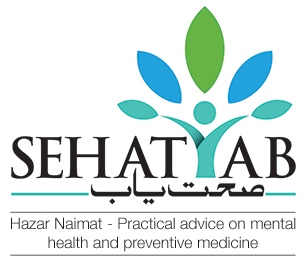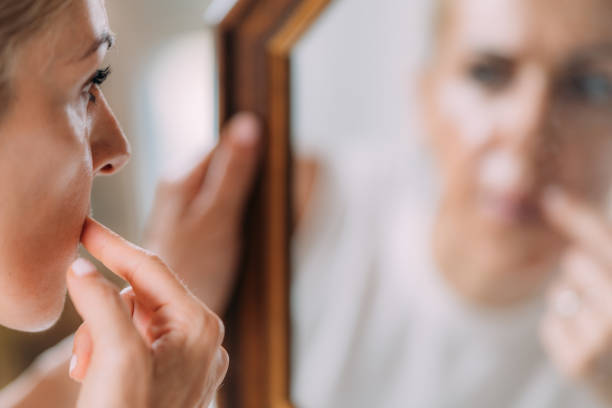Pakistan is a diverse country, rich with societal norms and values. With the change in modern trends in beauty, it is crucial to understand how these societal norms and beauty standards influence self-perception. Body dysmorphic disorder is a hidden struggle behind these beauty standards. Addressing this disorder, which significantly impacts an individual’s mental health and well-being, is necessary.
What is body dysmorphic disorder?
It is a mental health condition in which people overly think about perceived defects or flaws in their bodies. These flaws can be minor, or even non-existent. This preoccupation with self-perceived defects in the body’s appearance disturbs people’s daily life, leading to distress. People feel ashamed and embarrassed about their bodies. This condition makes people overly anxious that they avoid socialization.
People with body dysmorphic disorder intensely focus on grooming. They check the mirror repeatedly and seek reassurance. They may also seek out cosmetic procedures or items to fix their perceived flaws.
Is body dysmorphia linked to OCD?
Both body dysmorphic disorder (BDD) and obsessive-compulsive disorder (OCD) are different mental health conditions, but they are closely linked. OCD is repeated and unwanted thoughts, images, or urges, which are called obsessions. This condition leads to repetitive behaviors known as compulsions. Similarly, BDD often links to repetitive thoughts and becoming overly worried about perceived flaws in appearance, which can also lead to periodic behaviour. In this case, grooming or reassurance could be called compulsions. However; both conditions are linked to thoughts that cause anxiety. In OCD the things in focus are cleanliness, safety, order, etc. So people perform repeated actions to reduce anxiety, for example; washing hands or checking locks. On the contrary; the things in the focus of BDD are obsessive thoughts about one’s physical image.
These conditions are linked because both include obsessive thoughts and repetitive behaviours. Obsessive compulsive disorder includes general fear while body dysmorphic disorder involves appearance concerns.
What is the difference between body dysmorphia and gender dysphoria?
Body dysmorphia is a mental health condition, which is linked to extreme concerns about one’s appearance, or body image. It simply means the person is over-concerned about the way he looks. However; body dysphoria refers to distress when there is a mismatch between one’s gender identity and biological sex.
What are the five signs and symptoms of body dysmorphia?
Signs and symptoms of body dysmorphia include,
Preoccupation of thoughts about appearance i.e. thinking about flaws in the body, even if they are minor, or may not be noticed by others.
Focus on excessive grooming, checking the mirror repeatedly, applying makeup, camouflaging, or hiding flaws with clothing.
People with body dysmorphic disorder avoid socialization, because of the fear of criticism or judgments about perceived imperfections.
People seek cosmetic treatments or procedures like surgeries.
Feelings of shame and low self-esteem are common.
How is body dysmorphic disorder diagnosed?
Medical evaluation is necessary to help rule out other medical conditions like eating disorders to confirm BDD.
Diagnosis of BDD includes,
Clinical assessments by mental health professionals: evaluate the individual’s symptoms
The Diagnostic and Statistical Manual for Mental Health Disorder DSM 5 outlines specific criteria.
Personal, medical, social, and family history is also crucial along with signs and symptoms for the diagnosis.
What are the causes of body dysmorphia?
It is caused by a combination of biological, psychological, and environmental factors.
Biological factors include a family history of disorders like CBD, OCD, or anxiety disorders. It is also caused by imbalances in brain chemicals like serotonin.
Psychological factors include trauma, for instance; bullying, abuse, and neglect related to appearance in childhood.
Environmental factors include cultural or societal influences like unrealistic beauty standards through social media and societal expectations.
What is the best medication for body dysmorphic disorder?
Medications are recommended to treat body dysmorphic disorder. But the right medication and right dosage is the need of time.
Selective serotonin reuptake inhibitors SSRIs: These are used to treat many medical conditions. They are non-addictive drugs. Research studies have proved that SSRIs are beneficial for patients with body dysmorphic disorder because they substantially reduce the BDD symptoms. In addition, they are also used to treat anxiety, depression, anger, etc. Some common SSRIs include fluoxetine and sertraline for the treatment of BPD.
Antipsychotics are also necessary. But keep in mind medications should always be used with the consultation of mental health professionals.
What is the treatment of body dysmorphic disorder in Pakistan?
Treatment of body dysmorphic disorder in Pakistan includes the following techniques,
CBT (cognitive behavior therapy): It is a form of psychotherapy that helps you to identify your fears about yourself, and to change your negative thoughts, or perceptions about yourself.
Medications prescribed by mental health professionals.
Support Groups: For sharing experiences with people having the same therapeutic conditions.
Mindfulness and relaxation techniques including meditation, deep breathing, and mindful listening to concentrate on the present moment and to reduce anxiety related to appearance concerns.
How SehatYab will be helpful?
SehatYab is an online platform for the support of people struggling with mental health conditions. It consists of professional and experienced mental health professionals specialized in body dysmorphic disorder and related conditions. Moreover, it provides easy access to online therapy. Additionally, it also provides educational resources like articles and workshops to raise awareness about mental health conditions.

